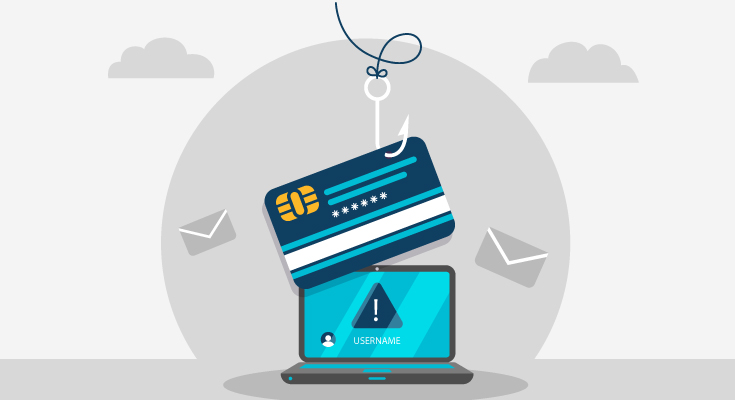Today, people can use business services globally. Digital transactions allow consumers to connect with brands all over the world and take advantage of eCommerce opportunities.
Building trust in digital commodities is ideal for your business to succeed. Businesses don’t know who exactly they’re transacting with. So, transacting online requires verifying identities and preventing online transaction fraud.
Apart from customer onboarding, businesses have to continue to protect themselves from transaction fraud. Businesses should be able to identify suspicious activities or anomalies intelligently and generate accurate and timely feedback on the transactions.
In this guide, we’ll cover what is transaction fraud and how to detect transaction fraud.
What is Transaction Fraud?
Transaction fraud is a major risk for any business that does business online. The most common types of transactional fraud include identity fraud, fake payment methods, or the use of fake information by a fraudster.
Transaction fraud committed by organized criminals leads to legit customers being victimized. Individuals that commit transaction fraud seek to abuse the business policies and chargeback policies.
According to reports, criminals stole more than £609.8 million through authorized and unauthorized transaction fraud.
The biggest problem is that the situation is continuing to get worse.
Types of Transaction Fraud
1. Authorized Fraud
This type of transaction fraud tricks a customer into making a payment. The methods to conduct this type of fraud include:
- Purchase scams
- Investment scams
- Romance and advance fee scams
- Invoice fraud
- CEO fraud and impersonation
These frauds rely on social engineering, fake phone calls, text messages, emails, etc. to trick customers into making a payment.
2. Authorized Push Payment (APP) Fraud
Authorized push payment (APP) fraud type of fraud is similar to authorized payment fraud. Fraudsters trick customers into sending payments into an account controlled by a criminal. Fraudsters could act as a government department, debt collection agency, or someone else to get payments.
3. Unauthorized Fraud
Another type of money transfer fraud involves payments that happen without the victim’s knowledge. This type of fraud is also known as account takeover fraud or ATO.
Fraudsters use several techniques to make this type of fraud happen:
- Phishing emails
- Fake call centers
- Device compromise
- SIM swap
- Malware and ID spoofing
4. Account Takeover Fraud
Account takeover fraud is a type of ID theft and a very common type of transaction fraud. Fraudsters can’t take over an account without stealing users’ personal information such as account credentials, security question answers, and other account data.
5. Card Not Present Fraud
CNP is also referred to as ‘remote purchase fraud’, this type of card payment fraud makes unauthorized use of stolen or leaked card details. Most of the information is obtained through data breaches, phishing emails, or purchases on the dark web.
6. Lost or Stolen Card
As the name suggests, this type of fraud happens whenever a user loses their card or it gets stolen. Fraudsters use a card without the user’s permission and usually without the user’s knowledge.
7. Chargeback Fraud
Chargeback fraud or credit card dispute fraud is an intentional attempt by a cardholder to make an illegitimate chargeback to the card after an online purchase.
Customers who do chargeback fraud intentionally tend to use these reasons most commonly:
- The charge on the card is not recognized by the user.
- The product or service hasn’t been received.
- The product was damaged, defective, or didn’t match the description.
- The card was stolen or used without consent.
Strategies to Prevent Transaction Fraud
- Verify Customers at Onboarding
The best way to beat fraud is to verify customers during onboarding. The best practice in transaction fraud prevention is to recognize risk during the earliest stages of building a relationship with a customer.
Use online document solutions to onboard customers from all over the globe. Keep track of every small activity that a customer does and flag anything that looks suspicious or out of character.
- Take a Risk-Based Approach
Risk assessment is more crucial for businesses than what people think. A risk-based approach to transactions helps in effective and efficient transaction monitoring.
A risk-based approach doesn’t need to cover all scenarios and it should be sufficient to understand each product or service and sales channel. When you segment customers, products, and services in this way, a business can carry out custom-made transaction monitoring.
- Refine the Process
You can expect to detect and prevent fraud with any run-of-the-mill process. The entire fraud detection process should be a combination of customizable workflows, adaptive rules, strict rules, CDD and EDD methods, and so much more.
Without combining multiple techniques into a single workflow, it’s almost impossible to detect new-age fraud. There’s no single “perfect fraud detection” solution out there. So as a business, you have to combine multiple solutions to ensure your business and customers are safe from fraud.
Every single component should provide some kind of value. Successful fraud detection and prevention should happen at every step, not just one step.





